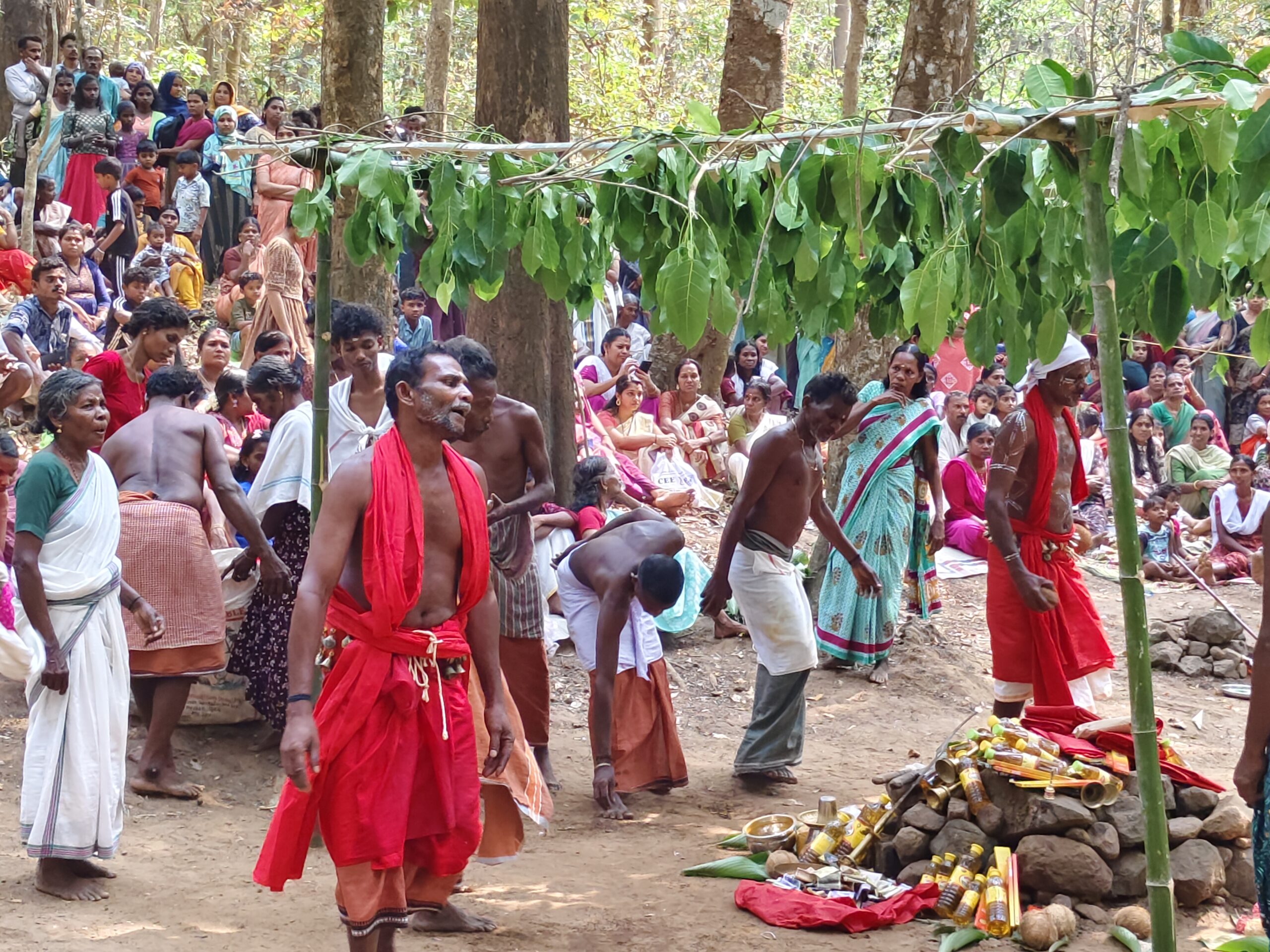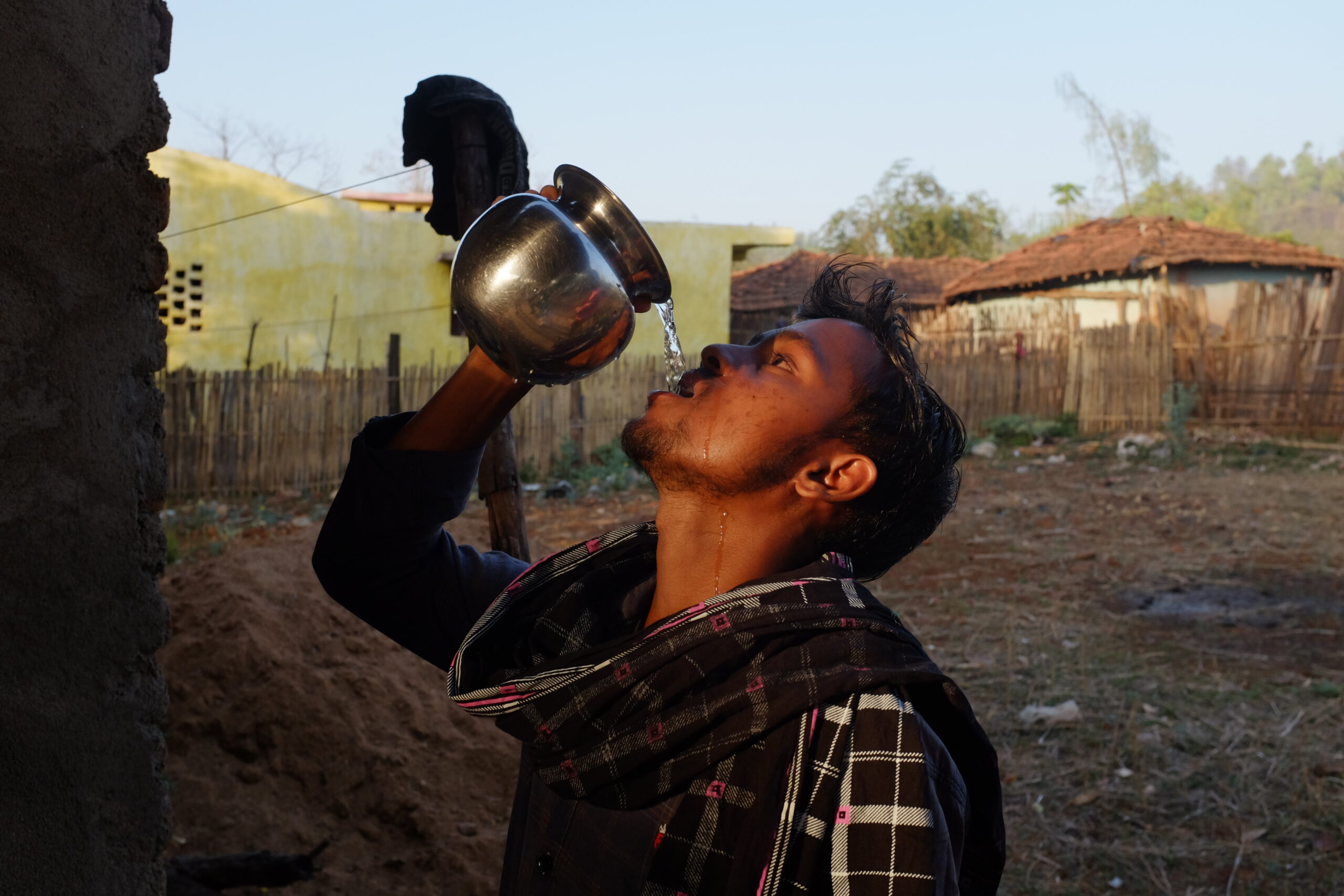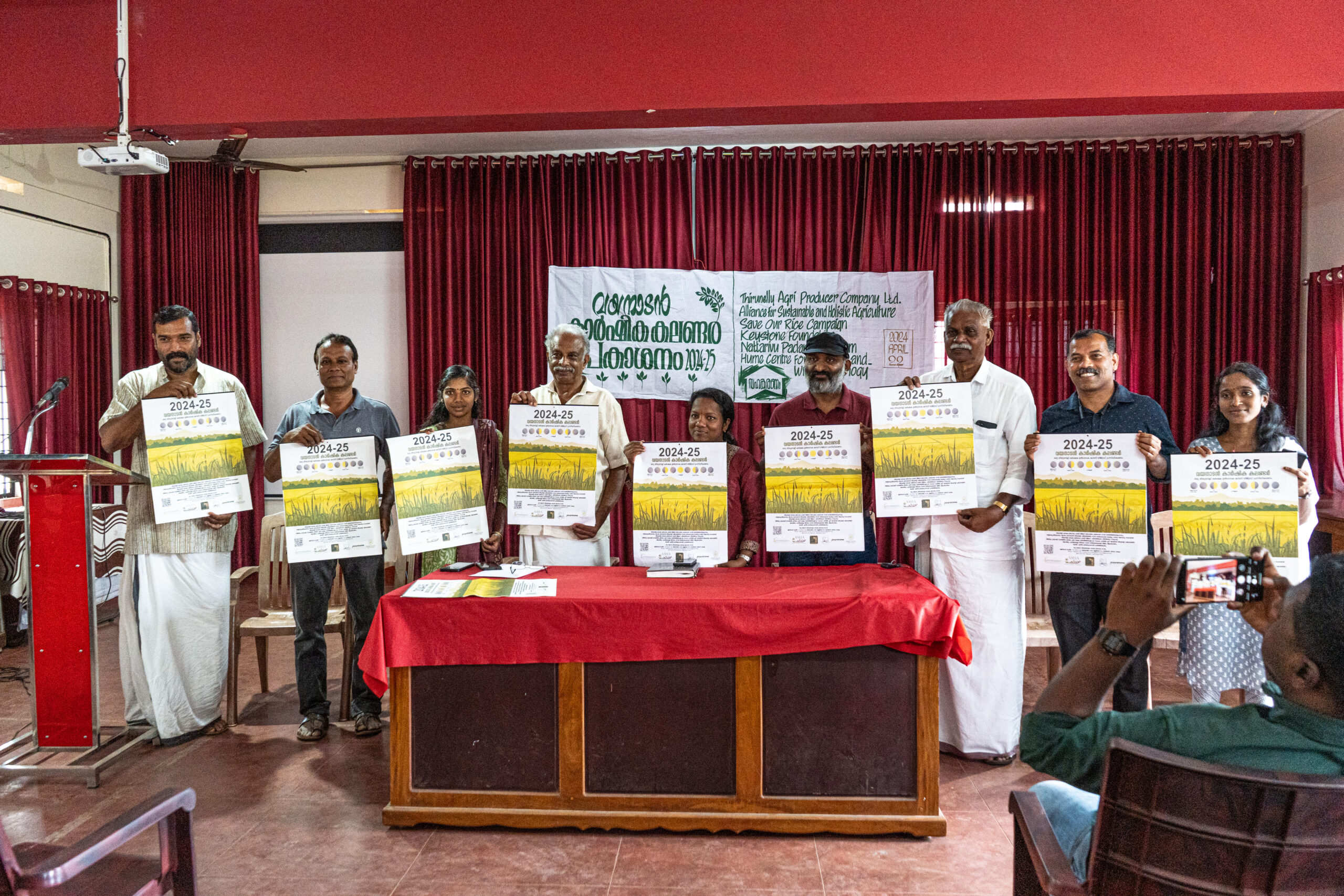June 23, 2023
By Rohan Mukerjee
Programme Coordinator – Networks & Alliances
Keystone’s Eastern India initiative that seeks to promote traditional and organic agriculture practices is currently involved in the beginnings of an initiative to set up pilot multilayer farming plots across several project areas: Musabani block, East Singhbhum district; Saraikela block, Saraikela-Kharswan district; Manoharpur block, West Singhbhum district; Sundar Pahari block, Godda district; and Orsa Pat, Mahuadanr block, Latehar district. In these regions, we have identified enthusiastic Community Resource Persons (CRPs) and farmers who are willing to learn about multilayer farming and replicate these practices on their lands. This month witnessed preliminary site visits and kickstarting of trainings for farmers.
A farmer from Panchal village, Bankura district, West Bengal, Bhairab Saini has been actively involved in the promotion of organic and ecological agriculture practices and conservation of traditional seeds since 2004. In the first two weeks of June 2023, Bhairab visited and inspected 11 potential plots for multilayer farming across five districts of Jharkhand. He has also been guiding farmers through processes in multilayer farming.
In February, a team of 26 comprising project staff, partner representatives, community fellows and men and women farmers from different areas of the Eastern India initiative had paid a visit to a regenerative agriculture initiative by Tejaswini Mahila Sangh and Pradan in Bokaro district, Jharkhand. They learned about the multilayer farming approach adopted by women farmers in the villages they visited. Multilayer farming is a type of polyculture that involves growing multiple crops in a single area which is used to optimize the use of land and improve soil quality.
Bhairab shared several insights into the multilayer farming processes with the CRPs and farmers:
- Under the multilayer farming approach, the land should not be left barren at any point of time in the course of the year and some crop or the other is cultivated throughout the year. Crops that are harvested are replaced by other crops which would need to be planted sometime before harvesting of the previous crops. The harvested plants serve as mulch thereby contributing towards improving soil quality and health.
- Ideally the plot should be green throughout the year with different crops being present at different times of the year. The cultivation process is primarily manual, and the farmer needs to care for the land and crops throughout the year.
- Multilayer farming involves cultivating crops of different heights. The understory comprises root crops and greens, the middle story comprises climbers and creepers while the upper story comprises tall plants like maize and sorghum and tree crops.
- Different techniques can be used to grow plants at different levels in the plot. While creepers could be guided to climb live plants, a cost-effective structure made using bamboo and rope can be used for creepers and climbers to grow on.
- The duration of crops in the plot will vary – while some might be ready for harvest in a few months’ time, others may be perineal and can be harvested for a number of years.
- There is a need to ensure availability of water for the crops and it is also necessary to ensure that all the plants are receiving adequate sunshine. The farmer needs to take decisions on where to plant the taller trees or plants and where to plant creepers and understory plants in such a manner that all plants get the requisite amount of sunlight.
- Based on the different plants and trees being cultivated the farmer would need to prepare a crop map for the plot which designates different sections of the plots for different kinds of crops in such a manner that the amount of sunlight available is utilized optimally with all plants getting sufficient access to sunlight.
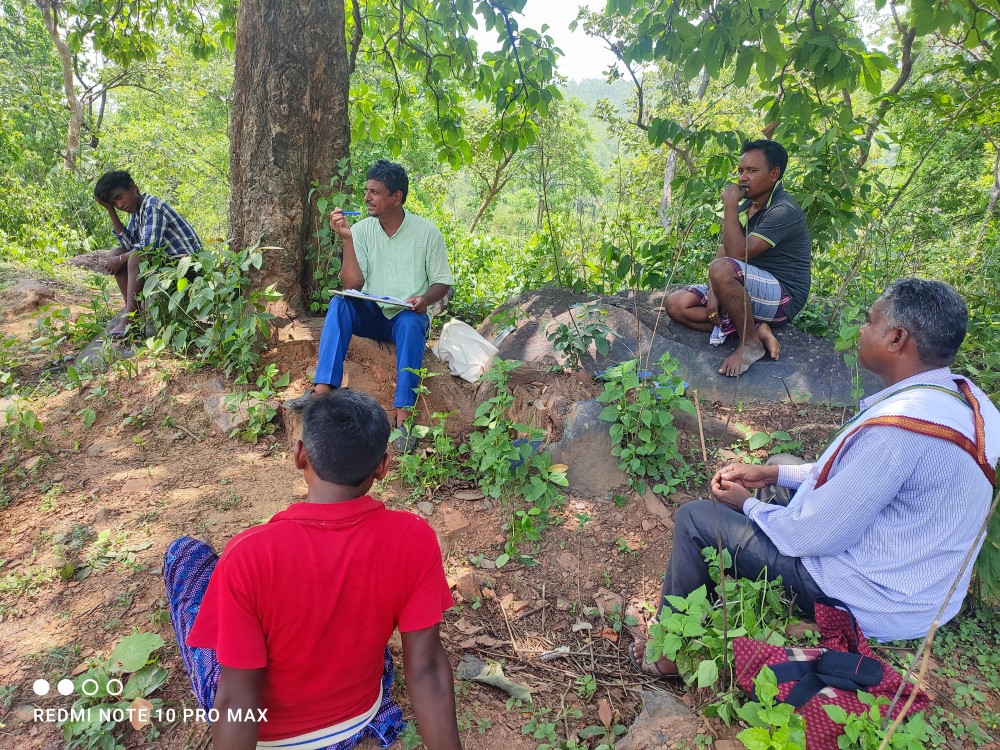
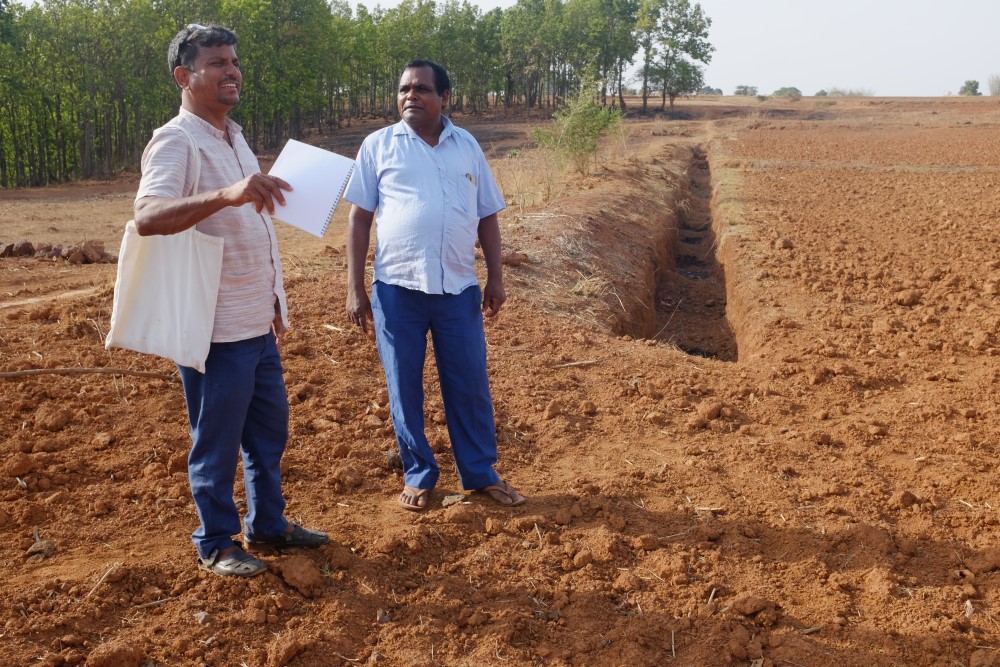
Bhairab discusses multilayer farming approaches with farmers and our community resource person Budheswar at Janglikhas village in Saraikela-Kharswan district (left) and at another plot in Orsa Chirchiri tola in Latehar district (right).
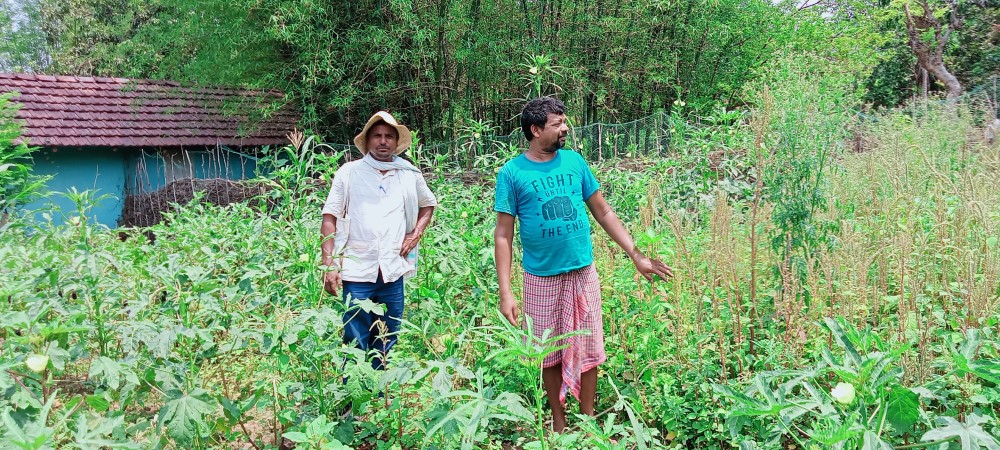
Bhairb inspects a mixed cropping plot in Patkita village, Musabani block, East Singhbhum district.
After concluding his field visits Bhairab shared the following findings and observations –
- Other than 2-3 farms a majority of the plots were currently barren with no crops being cultivated at present.
- Atleast 50% of the plots had good, fertile soil with most plots having existing fencing around the plot to safeguard the crops from livestock.
- The plots in 4 districts had access to water in some form or the other throughout the year. However, the access to water throughout the year, especially in the summer months was a matter of concern in Latehar District and going ahead we need to explore some solutions to the challenges posed by the scarcity of water.
- All farmers had harvested a winter crop in the previous agricultural cycle.
- Since most farmers have done monocropping on the plots they don’t have much of an idea about Multi-cropping and Multilayer farming practices. However, one exception was Naresh Hembram from Patkita village, Musabani Block, East Singhbhum District, Jharkhand. He has had a long term commitment to mixed cropping agriculture and has been cultivating a variety of crops on his land which included – bhindi, brinjal, kundru / ivy gourd, bitter gourd, bitter gourd, mango, Pui saag / Malabar Spinach, lauki / bottle gourd pumkin, chilli, cowpea, maize, amaranths, and rosella. While he is not carrying out multilayer farming in the scientifically prescribed manner, he has taken positive strides in the direction of carrying out organic mixed cropping farming on his land.
- With regards to the farmers whom we will be working with there is a need to develop their understanding about multi cropping and multilayer farming practices; support them in developing and putting into action a farming plan based on the character and features of their land like soil quality access to water and sunlight. While the quality of soil is poor in 2-3 plots a majority of the plots have good quality soil. He is confident if that we can work with the farmers to make appropriate plans and designs for carrying out multilayer farming on their lands then we will be able to create successful pilot multilayer farming plots which can serve as positive examples in their areas for other farmers to come forward to adopt this approach on their lands as well.
With the onset of the monsoons towards the end of June the farmers will be commencing land preparation and sowing the first crops in their multilayer plots. Bhairab will be making regular follow up visits to enable the farmers to draw up and put into practices plans for their plots and overcome challenges they may face along the way.


